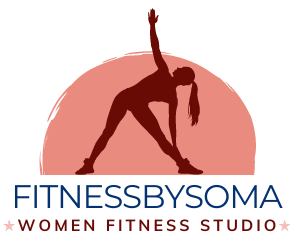To move is to be alive. — Anonymous
What types of exercise are best to lose fat?
Burst training is excellent for fat loss. What is burst training? Well, it can burn belly fat fast and involves exercising at 80%–90% of your maximum effort for 20–60 seconds in order to burn your body’s stored sugar (glycogen), followed by 20–60 seconds of low impact for recovery. This causes your body to burn fat for the next 24 hours or more to replace your body’s vital energy (glycogen) stores.
You only need to do 3–6 sets of 20–60-second bursts 3 times a week to see marked changes and improvements.
More is not always better — make sure you have days of rest. Besides weight loss, are there other reasons to exercise?
– Boosts brain power by increasing adrenaline, focus and acuity.
– It decreases stress and cortisol, which decreases fat storage.
– Increases your energy. It helps with joint health.
Longer is not better! We now know, the less time and greater intensity are essential for fat and muscle change. Burst or surge training is the way to achieve this.
So what are the benefits to burst or HIIT training?
It increases muscle stores. As we age, we tend to rationalize away our ability or inability to exercise. Low to moderate-intensity exercise has been proven to utilize only type I muscle fibers whereas both type I and II muscle fibers are utilized significantly in a high-intensity exercise like BURST Training.
The loss of muscle mass, often associated with aging, is largely due to the atrophy of Type II muscle fibers which are not worked at all in low-intensity exercise. It increases immunity.
There is scientific evidence that shows the immune system is suppressed following a cardio or aerobic workout. Plasma glutamine, an essential amino acid necessary for the normal functioning of the immune system, is decreased after long-duration exercise and increased after short-term, high-intensity exercise.
It improves your mood. Research shows that beta-endorphin levels associated with positive changes in mood state are increased in short-term, high-intensity exercise. This is the opposite of long duration, low-intensity exercise. In long-duration, low-intensity exercise, cortisol is released which can leave you feeling good at the moment but can enable you to feel extremely cranky later!
It improves your cardiovascular and respiratory fitness. Short bouts of exercise (anaerobic) have been shown to produce positive changes in cardiovascular and respiratory fitness when compared to long bouts of exercise (aerobic). Multiple studies show moderate-intensity aerobic training that improved maximal aerobic power did not change anaerobic capacity at all. On the other hand, high-intensity intermittent training may improve both anaerobic and aerobic energy-supplying systems significantly, likely through imposing intensive stimuli on both systems.
It increases HDL cholesterol. Many people today struggle with varying degrees of cholesterol problems and resign themselves to a life of medication to balance their cholesterol levels. Studies show doing short, intermittent bouts of high-intensity exercise (as compared to slow and steady continuous exercise) increased high-density lipoprotein (HDL) cholesterol levels.
This should be very happy news for some of you! Workout LESS and live a longer, healthier life! Blood pressure regulation. High-intensity exercise is great for many things and regulating blood pressure is just one more of them! In one study, comparing exercise intensity to exercise duration, exercise intensity had a 13.3 times greater effect on systolic blood pressure and 2.8 times greater effect on diastolic blood pressure.
Really, how can exercise stop fat loss? As mentioned above, if you are doing a long-duration aerobic activity (for example, walking 2 plus miles per day), you will be increasing your cortisol levels. Cortisol is a corticosteroid that is released in response to stress and increases abdominal fat storage. For many individuals, this type of exercise increases sugar cravings and fat storage as well as decreasing muscle mass.


Recent Comments